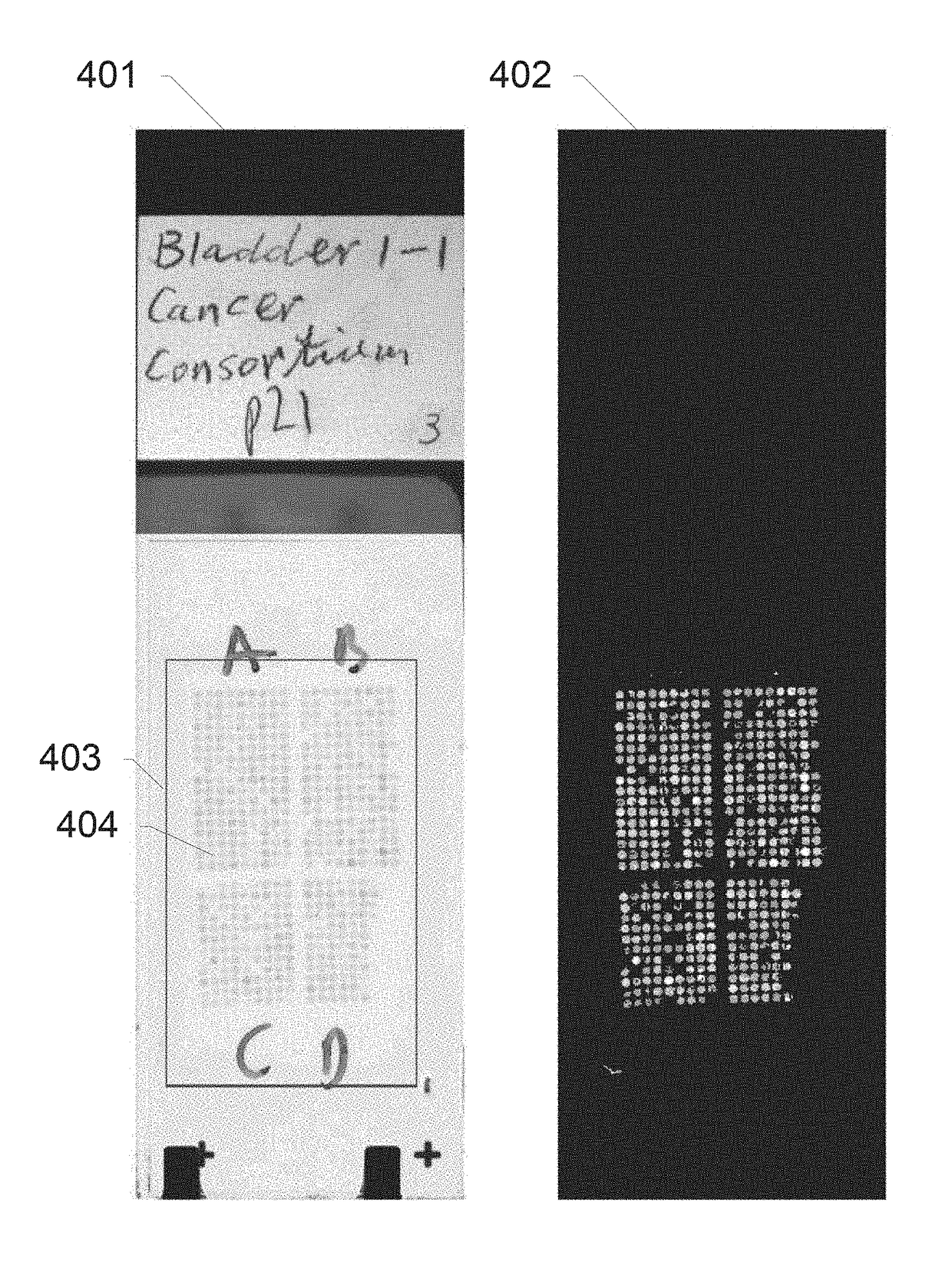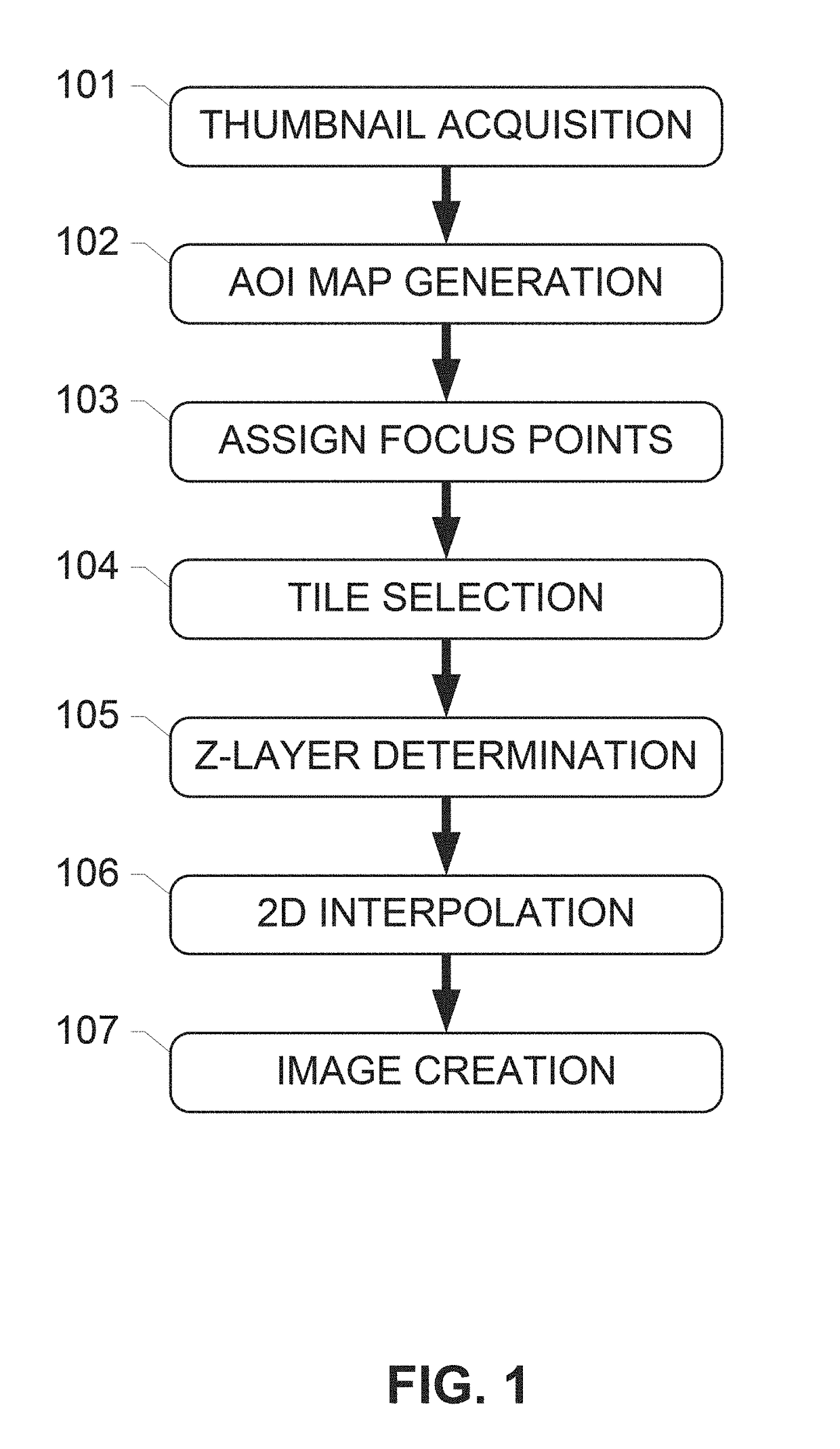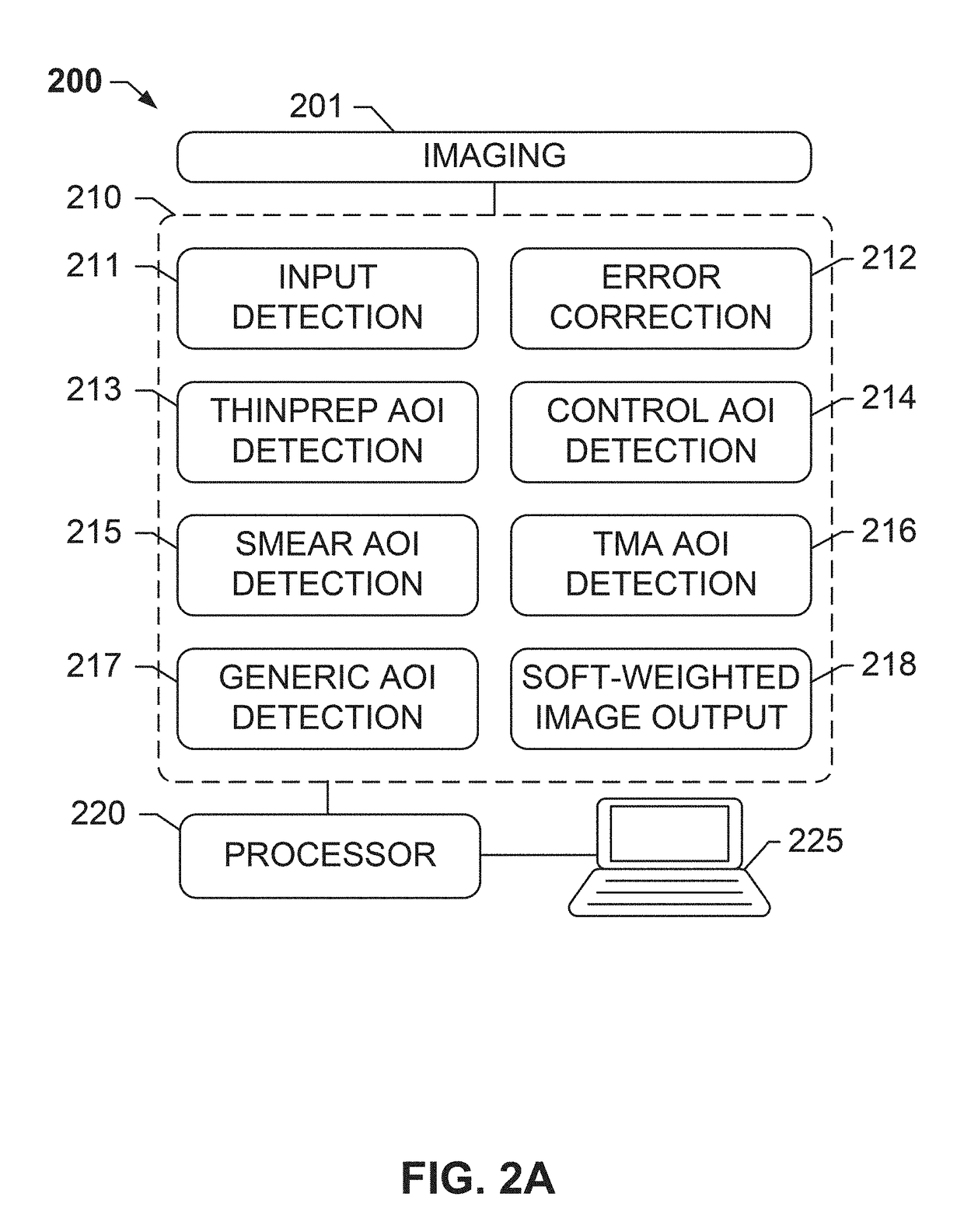Systems and methods for area-of-interest detection using slide thumbnail images
a technology of area-of-interest and slide thumbnails, applied in image data processing, image enhancement, instruments, etc., can solve the problems of high difficulty in solving the aoi problem, accurate and precise aoi detection, etc., and achieve the effect of efficient and accurate computation of aoi regions
- Summary
- Abstract
- Description
- Claims
- Application Information
AI Technical Summary
Benefits of technology
Problems solved by technology
Method used
Image
Examples
embodiment 1
[0229]2. The image analysis system of embodiment 1, wherein the digital image is a thumbnail image.
[0230]3. The image analysis system of any one of the previous embodiments, wherein the image analysis system comprises a user interface, wherein the selection of the slide-type specific tissue detection routine comprises receiving a user's selection of a tissue slide type via the user interface; and selecting the one of the slide-type specific tissue detection routines assigned the tissue slide type selected by the user.
[0231]4. The image analysis system of any one of the previous embodiments, wherein the generic tissue detection routine and one or more of the slide-type specific tissue detection routines comprise a sub-routine for generating a binary mask (M) that selectively masks non-tissue regions, the sub-routine comprising: computing a histogram (800) of a grayscale version of the digital image; extracting a plurality of intensity thresholds (rts) from the histogram; applying the...
embodiment 4
[0232]5. The image analysis system of embodiment 4, the extraction of the plurality of intensity thresholds from the histogram comprising: identifying a max-grayscale-index (mgs), the max-grayscale-index being the maximum grayscale intensity value observed in the histogram; identifying a max-histogram-location (mhl), the max-histogram-location being the grayscale intensity value having the highest occurrence frequency in the histogram; computing a rightgap by subtracting the maximum-histogram-location (mhl)from the max-grayscale-index (mgs); computing a glass-left-cutoff according to glass-left-cutoff=max-histogram-location(mhl)-rightgap; performing the extraction of the plurality of thresholds such that the lowest one (dco[0]) of the thresholds is an intensity value equal to or larger than glass_left_cutoff−rightgap and such that the highest one of the thresholds is equal to or smaller than glass_left_cutoff+rightgap.
embodiment 5
[0233]6. The image analysis system of embodiment 5, the extraction of the plurality of intensity thresholds from the histogram comprising: computing an interval-range-gap(irg) according to irg=max(1, round(rightgap / constant)), wherein constant is a predefined numerical value between 2 and 20, preferentially between 3 and 8; computing a max_rightgap value according to max_rightgap=min(rightgap−1, round(rightgap * gap_cutoff_fraction), wherein the gap_cutoff_fraction is a predefined value in the range of 0.5-0.95, preferentially 0.7-0.8; computing a number_interval_terms according to number_interval_terms=((max_rightgap+rightgap) / interval_range_gap); creating the plurality of threshold such that their number is identical to the computed number_interval_terms.
[0234]7. The image analysis system of embodiments 4, 5 or 6, the application of the plurality of intensity thresholds (rts) on the digital image for generating a plurality of intermediate masks comprising: a) creating a first inte...
PUM
 Login to View More
Login to View More Abstract
Description
Claims
Application Information
 Login to View More
Login to View More - R&D
- Intellectual Property
- Life Sciences
- Materials
- Tech Scout
- Unparalleled Data Quality
- Higher Quality Content
- 60% Fewer Hallucinations
Browse by: Latest US Patents, China's latest patents, Technical Efficacy Thesaurus, Application Domain, Technology Topic, Popular Technical Reports.
© 2025 PatSnap. All rights reserved.Legal|Privacy policy|Modern Slavery Act Transparency Statement|Sitemap|About US| Contact US: help@patsnap.com



